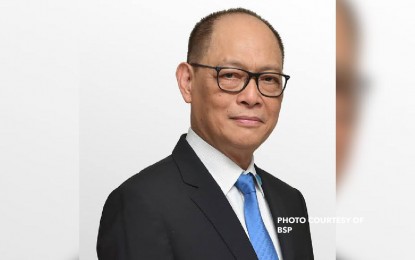
STILL COMPETITIVE. Incoming Department of Finance (DOF) Secretary Benjamin Diokno says the peso is depreciating but its level is in the middle of the pack compared to other currencies of Asian neighbors. He said the local currency remains competitive against the US dollar. (Photo from BSP)
MANILA – Incoming Finance chief Benjamin Diokno said the depreciation of the peso is not that bad as it remains in the middle of the pack compared to other currencies of Asian neighbors, adding the local currency is still competitive.
The local currency weakened to 55-level against the US dollar on Wednesday, which authorities and economists point to the impact of stronger dollar due in part to continued increase in Federal Reserve’s key rates and the Russia-Ukraine war on global commodities prices.
Diokno told reporters Wednesday night that the right way to assess the peso’s performance is its real effective exchange rate, or how it compares with other competitors.
“We are at the middle so our currency is competitive,” he said, adding the unit that has posted the highest depreciation so far is the Japanese yen followed by the Indian rupee.
Diokno said that if the local unit is “very competitive”, which means you will need less peso in exchange for a US dollar, it will benefit, among others, those who have the capacity to travel abroad and those who consume goods being sold overseas.
He said the weakness of the peso will benefit beneficiaries of overseas Filipino workers (OFWs) and the exporters.
Meanwhile, Diokno said the incoming administration will be opportunistic in tapping the foreign capital markets to boost financing for its projects.
“But right now, I think, our bias is to rely on domestic borrowings,” he said.
Diokno said that in the past, the government had an issue with paying its foreign debt because of the peso’s devaluation and the lack of dollar reserves.
“It’s different now. We’re far from that already,” he said, citing “the doctrine is if you have three months worth of imports cover, you’re okay.”
He said most or around 80-85 percent of government’s foreign loans are medium and long-term tenors thus, it will take a longer time to pay. (PNA)
